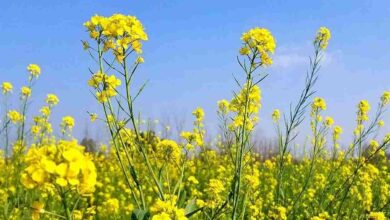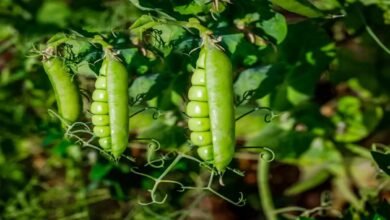Organic Fertilizers: Maintain organic products in this way, they will never go waste
Organic Fertilizers: Chemical-free farming is being emphasized a lot these days. In addition to many state governments, the Indian government is placing a strong focus on natural and organic farming. The use of bioproducts, such as biostimulants, biopesticides, and fertilizers, in horticulture and agriculture has grown significantly in this age of natural and organic farming.

In order to preserve soil quality, support sustainable agricultural systems, and safeguard the environment, organic materials are used in horticulture and agriculture. Today’s farmers depend heavily on organic goods like biostimulants, biopesticides, and biofertilizers. It’s critical to maintain these items properly by paying attention to the following factors, which will keep them effective, including…
Upkeep for Biofertilizers
- Rhizobium, Azotobacter, and Phosphate Solubilizing Bacteria (PSB) are examples of biofertilizers that are used to maintain soil fertility and boost crop output. The following methods should be used to save these:
- Biofertilizers should be stored between 15 and 25 degrees Celsius. These bacteria may be negatively impacted by high temperatures.
- Dry Place: The storage space has to be well-ventilated and dry. Humidity protection is essential.
- Protection from Light: The microorganisms in biofertilizers may be killed by exposure to direct sunshine.
- Expiration Date: Note the product’s expiration date and avoid using outdated materials.
Managing Biopesticide Use
- To manage pests and diseases, biopesticides including Trichoderma, Beauveria bassiana, and Bacillus thuringiensis (BT) are used. The following are some methods to store them:
- Cool and Dry Location: Keep biopesticides between 10 and 20 degrees Celsius in a cool, dry location.
- container Maintenance: To keep the product safe from air and moisture outside, keep it in its original container. Precautions for Mixing Avoid combining with chemical pesticides, as this might lessen the biopesticide’s efficacy.
- Use Time: Since the prepared solution has a short shelf life, mix just before using.
Managing Biostimulant Use
- Plant growth may be aided by biostimulants such as mycorrhiza, humic acid, and seaweed extracts.
- Proper Storage Temperature: 5–25°C.
- Safe Container: Keep biostimulants in containers that won’t leak.
- Steer clear of transparency: Light may harm products, so steer clear of translucent packing materials.
- Use Proportionately: Only use in the designated proportion. Plants may suffer adverse consequences from overusage.
Product Handling and Transportation
- When handling and shipping organic goods, the following safety measures should be followed….
- Transporting items should be done carefully to prevent shock or extreme heat.
- Labeling Maintenance: Throughout storage and transit, all containers must be appropriately labeled.
- Storage separation: Keep chemical and organic goods apart.
Considerations before using items
- Observe the directions: Each product comes with use instructions that you should read and abide by.
- Crop characteristic: Choose the product based on soil conditions and crop requirements.
- Date of expiration: Use only newly created goods within the allotted period.
Environmental and social factors
- Protection of the environment: Using organic goods benefits the environment. Therefore, advocate for them as a chemical substitute.
- Farmers should get frequent instruction on how to properly utilize and care for these goods.
Typical safety measures
- Steer clear of polluted areas: Avoid keeping the items in unclean or contaminated areas.
- Reuse: Steer clear of recycling old containers.
- Local climate: When storing, take into account the local climate.





